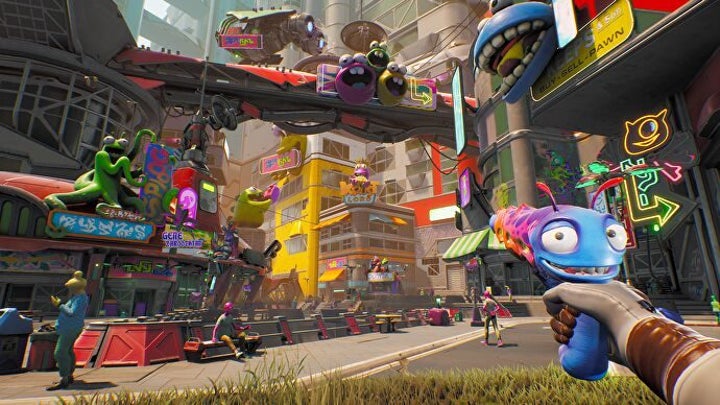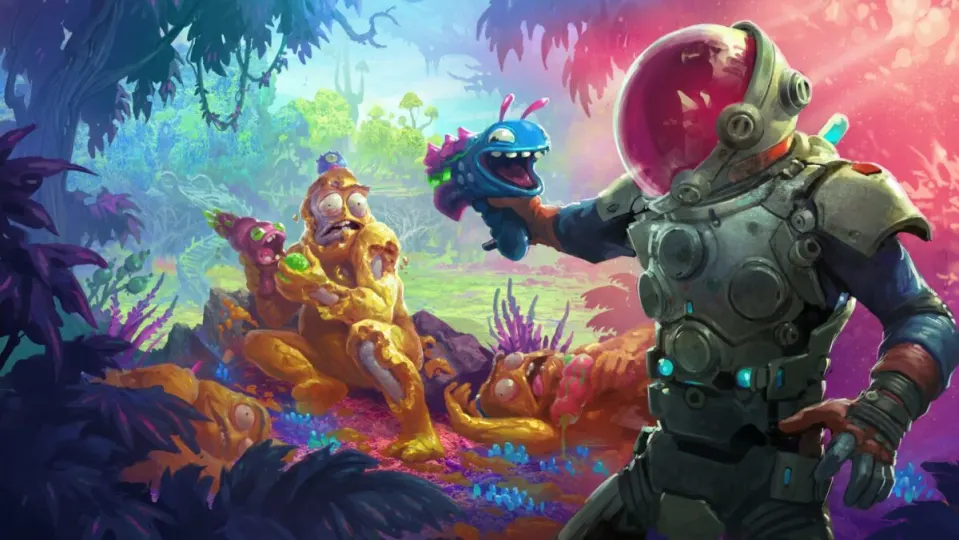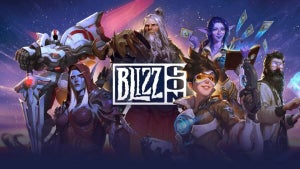Justin Roiland is the chief brain behind shows like Rick and Morty. Roiland’s publishing studio Squanch Games has recently released a cosmic adventure game called High on Life. If you’ve ever seen an episode of Rick and Morty, the saturated colors, vivid imagery, and slightly off-balance settings will be nothing out of the ordinary. If anything, the game feels like a progression in terms of Roiland expressing his unique views and ideas. The latest question: Does it contain AI?
While this game was built to be enjoyed, it’s currently being crucified by the some journalists. Some publications are particularly upset about the fact that Roiland has admitted to using AI-generated assets in the game.
In a recent interview with Sky News, Roiland touched on the fact that he used MidJourney, an AI utility, to form more interesting ideas for the final product. I read the entirety of the Sky News article and came away with the feeling that Roiland and his team had put so much effort into High on Life. Our contemporaries, however, read ‘AI’ and decided that would be the hill upon which they take their stand.
Roiland mentions that he used MidJourney because he found that the images the utility produced ‘makes the world feel like a strange alternate universe of our world.’ He also states that the utility was useful when trying to come up with ‘weird, funny ideas.’ Rick and Morty is a fever dream of weird, funny ideas, and all of them spring forth from the minds of Justin Roiland and his counterpart Dan Harmon.

Having the familiarity with Roiland’s work that I do, I find it difficult to believe that he absolutely needed a utility like MidJourney. However, High on Life speaks for itself. It doesn’t get more weird and funny than a gun that talks, incessently.
It’s also pertinent to look at the use of words before jumping on the ‘crucify Justin Roiland’ bandwagon that many journalists seem to be fueling up as we speak. Justin makes no mention of using AI-generated assets in the final product. Instead, he plainly states that he used the utility to come up with weird, funny ideas. These assets couldn’t have made it into the final product simply due to the fact that MidJourney creates images, and the game is not comprised of static images. At most, Roiland would have used the images to build up and create backgrounds or settings for the game to amp up the weirdness.
I have been incredibly critical of AI and its inclusion in the world of digital art, and I will likely continue to do so. However, there’s a massive distinction between using text prompts to essentially rip off an artist who practised, learnt, and trained for years to hone their skills, and using AI-generated images as inspiration for unrelated media.
I don’t hate AI. In fact, I agree with Roiland when he says that ‘AI is going to be a tool that has the potential to make content creation incredibly accessible.’ However, I think we need to better define the legal side of the AI artwork argument. I also think that gaming journalists should stop trying to cancel creators for what they perceive as a misstep, and focus instead on the brilliance behind the game. Have I mentioned that the guns can talk?
If talking guns interest you, check out what happens when you pause High on Life. It seems Roiland’s penchant for breaking the fourth wall has followed him into game development.


